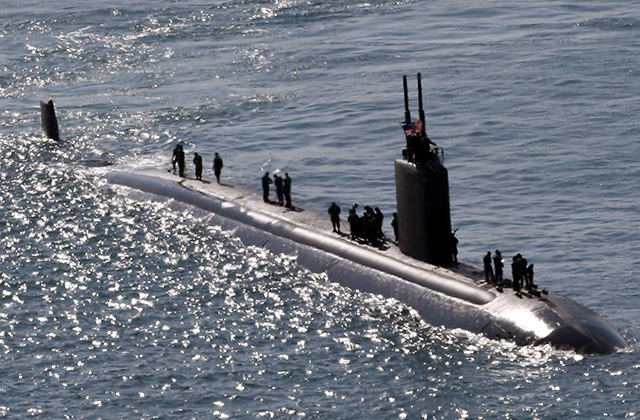Defense Cuts Leaving the U.S. Navy Toothless?
Dakota Wood / Diem Salmon /
Earlier this month, the Obama administration released the annual FY2015 budget request for the Department of Defense. As analysts pore over the several thousand pages detailing spending plans for each program in the U.S. military, a number of head-scratching decisions are coming to light.
For example, the Navy has decided to cut several of its missile programs. As reported by this Washington Free Beacon article, and reprinted by The Washington Times, the Tomahawk and Hellfire missile, “two highly successful missile programs,” are being terminated. In addition to these two programs, the Joint Stand Off Weapon (JSOW) will also be terminated two years from now.
The cancellation of these programs “leaves the Defense Department with dangerous gaps in key areas,” states Representative Randy Forbes (R–Va.). The ending of the Tomahawk production line is particularly concerning. Without a doubt, the Tomahawk missile is quite outdated—but it is also the main ship-based land attack or anti-ship missile used by the Navy. While the DOD has stated its intent to develop a successor for the Tomahawk, the chance of a new missile being developed prior to the depletion of the current Tomahawk inventory is unlikely. In other words, the Navy is at risk of having no ship-based strike capability.
According to the Navy, the cancellation of the Hellfire missile is also the result of reaching the “total munitions requirement.” However, the cancellation of the Hellfire poses less of a risk than the end of Tomahawk. The Hellfire missile is used by the U.S. Air Force and many militaries around the world, thus the cancellation of the Navy procurement does not put the production line at risk of closure. Should the Navy decide to purchase more in the following years, it would be able to do so. In addition, the military has often used OCO funds to purchase additional Hellfire missiles. Lastly, there are development programs already in existence to replace the Hellfire, such as the Joint Air-to-Ground Missile (JAGM).
The Navy is absolutely correct in wanting to develop more capable versions of older weapons like the Tomahawk and Hellfire missile. Developing a weapon systems with longer range, greater precision, and higher speed that can defeat capable enemy defenses is a must. But while these advanced systems will be more effective, they will also be more expensive. Consequently, the production numbers of these next generation weapons will likely be lower.
Thus, the Navy should have a healthy blend of both: advanced highly technical weapons and cost effective but still quite useful armaments—e.g. Hellfire and Tomahawk (an important point considering that not every use of ship-based strike missiles will be deployed against an advanced enemy).
The more advanced missiles, although smaller in number, can be used to defeat enemy defenses, creating gaps exploitable by more numerous and more affordable follow-on attack options. By employing both types of weapons, the Navy will ensure it has options when engaging any type of adversary. However, by canceling one type of weapon before the other is fully in inventory, the Navy runs the risk of not having either—and that is unacceptable.

